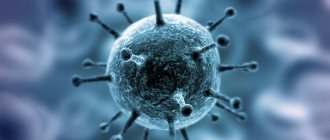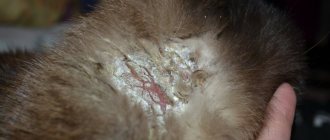Taking blood from a cat
Taking blood from a cat is one of the main components of diagnosing various diseases. This analysis will be informative for various pathologies and disorders of the animal’s body and will help the doctor choose the right treatment tactics. In some cases, the test may need to be repeated to monitor the condition or evaluate the healing process. The procedure must be performed by a specialist to prevent injury to the animal. Blood collection from cats can be performed either in a veterinary clinic or at home.
Requirements for a blood donor dog:
- age from 1 year to 7 years;
- weight from 25 kilograms (this is on average, it is better to check the weight with a doctor);
- vaccination by age (annual, comprehensive);
- deworming and treatment against parasites (fleas and ticks);
- absence of episodes of viral diseases;
- good health throughout the year;
- absence of estrus, pregnancy, or nursing offspring at the time of the procedure.
Indications
Taking blood from cats and dogs is carried out for the same purpose as from people - to diagnose the condition of the body and identify various diseases. The analysis will also be required when performing blood transfusions between the donor and recipient.
Important! Transfusion (blood transfusion) is a complex and difficult manipulation that is performed strictly according to indications (oncological diseases, anemia, trauma, coagulation disorders, sepsis).
Analysis may be prescribed in the following situations:
- Diagnosis of the disease. The study will allow you to evaluate the level of leukocytes and other indicators, which may indicate the presence or absence of inflammation, various pathologies and other disorders of the body.
- Preoperative study. The test is almost always prescribed before surgery. It will minimize the risks that accompany any operation. It will also help to identify hidden problems in the functioning of the animal’s organs, which can negatively affect the cat’s condition after surgery.
- Preventive measures. The study can be initiated by the cat owner or the sanitary and epidemiological service in order to identify infectious agents in the animal if there is a high risk of developing dangerous diseases in this particular area.
Preparing the animal
To get accurate results, the animal must be prepared for testing. Otherwise, the data may be significantly distorted and a repeat survey will be required. The basic rules of preparation are:
Feeding
The pet should not be given food 6-8 hours before blood sampling. As a result of fasting, the blood is cleared of the high fat content (hyperlycemia) that occurs in animals after consuming food.
Drink
Your pet should have free access to plenty of clean water. Especially in hot sunny weather. Under no circumstances should you allow even slight dehydration of the body. Therefore, you need to take water with you even on a trip just before visiting the veterinarian.
Types of analyzes
The following tests may be ordered to evaluate various conditions:
- general blood test - shows the level of red blood cells, leukocytes, hemoglobin, etc.;
- biochemical analysis is a more informative method that allows you to evaluate the functioning of a particular organ or system (level of total protein, amylase, tringlycerides, glucose, magnesium, sodium, etc.);
- determination of hormones - used to diagnose reproductive function and metabolic processes;
- electrolytes and blood gases - allow you to diagnose systemic diseases that are accompanied by muscle weakness, disruption of the gastrointestinal tract, edema, etc.;
- blood cytology – used in the diagnosis of neoplasms;
- blood for blood transfusion - necessary to determine the compatibility of the biological material of the donor and recipient.
Deciphering the norms of cat blood biochemistry
Biochemistry or biochemical blood test is a detailed and accurate laboratory test based on the indicators of various elements that play a key role in the life of a mustachioed pet. The picture of enzyme activity allows us to draw conclusions about the degree of health or damage to various internal organs of the animal, respectively, to understand the deep processes taking place in all systems, departments and organs.
The picture of enzyme activity allows us to draw conclusions about the degree of health
Let us consider separately groups of substances and elements, the relationship to the norms of which is shown by biochemistry:
- Total protein and albumin reflect how correctly the metabolism of amino acids occurs in the body, which plays a vital role in the cat’s life. During this exchange, beneficial substances are transferred and stored, blood pressure is regulated, and reserve forces are accumulated to fight diseases and support the immune system.
- Glucose is an indicator that reveals the norms of functioning of the enzyme system, as well as specific organs (liver, pancreas, kidneys).
- Bilirubin is a component whose quantity can be used to track changes in the functioning of the liver and biliary system.
- Cholesterol is a structural component on which the quality of lipid metabolism in a cat depends.
- GGT is a liver type of enzyme that regulates the functions of the gallbladder and ducts, thyroid gland, and pancreas.
- Amylase, a component considered in conjunction with other elements, shows how the pancreas and parotid (saliva production) glands function.
- ALT and AST are enzyme substances produced in the liver and skeletal tissues, heart muscle, indicating the functioning of these systems and departments.
- Alkaline phosphotase is a component on which the correct functioning of the liver depends.
- Creatinine and urea are products of muscle breakdown that are excreted from the cat’s body by the kidneys. The level of these components indicates healthy or, on the contrary, improper functioning of the excretory system.
- Calcium is an element that conducts nerve current impulses. Its normal level indicates problems with the circulatory and cardiovascular systems.
- Triglycerides characterize the energy metabolism of an animal, the functioning of the heart and blood vessels.
- Electrolytes demonstrate the conductivity of nerve fibers and the execution of brain commands.
The advantage of biochemical (detailed) analysis is the ability to clearly see problems in entire organ systems, individual organs and their departments, to assess the degree of disorders and their causes with high accuracy. For clarity, we will present the decoding of biochemistry according to the animal’s organs or important life processes.
Increases and decreases in the norm of indicators in biochemistry often indicate the same pathological processes
Table 2. Water and electrolyte balance
| Index | Norms | What does it indicate? |
| Potassium | 3.8-5.4 mmol/l | Above this level indicates problems with the thyroid gland, hypovitaminosis (lack of vitamin D), formations (cysts, tumors) of various origins, and kidney failure. A decrease in the norm indicates hyperfunction of the adrenal glands, chronic starvation of the animal, and dyspeptic disorders. |
| Chlorides | 106-124 mmol/l | An elevated level indicates traumatic brain injury, impaired functioning of the kidneys and adrenal glands, and an overdose of steroid drugs. |
| Iron | 20-31 mmol/l | If the element exceeds normal levels - liver disease, inflammatory processes in the kidneys, metal intoxication. Decrease in quantity – malignant or benign formations, infection, anemia, post-operative syndrome |
| Phosphorus | 1.2-2.4 mmol/l | In excess of the normal amount - kidney disorders, genitourinary system disorders, diabetes. Below the limits of the indicated indicators – rickets, disorders of the gastrointestinal tract |
| Sodium | 142-166 mmol/l | Above the normal level – diabetes mellitus and frequent urination due to it, problems with water metabolism, kidneys, and excessive amounts of salts. Reduced sodium norm - heart failure, edema in the animal, kidney pathologies, taking diuretics, diabetes mellitus. Decrease in quantity – nephritis, dyspeptic disorders, accumulation of carbon dioxide in the blood |
Biochemical analysis allows the veterinarian to assess the condition of the cat’s internal organs
Table 3. Protein level (hormonal levels)
| Index | Norm | What does it indicate? |
| Albumen | 23-37 g/l | A decrease or increase in the amount is confirmed by the protein (total) results. A fall or increase in the amount of albumin occurs only against the background of a similar fall or increase in protein in general. The difference in the obtained digital values may indicate an analysis error |
| Complete protein | 55-78 g/l | An increase in the norm indicates chronic inflammatory processes, possible burns, autoimmune diseases, and electrolyte imbalance. Decrease in quantity - serious disturbances in liver function (hepatitis, cirrhosis), blood loss, parasitic infestations, animal starvation, intestinal and kidney pathologies |
Table 4. Pancreas, liver, kidneys
| Index | Norm | What is he talking about? |
| Amylase | 779-1725 units/l | Increased rate: peritonitis, intestinal or gastric volvulus, severe intoxication, pancreatic inflammation, kidney failure, diabetes mellitus, inflammatory process. Decreased norm: poisoning, pancreatic necrosis. |
| AST | 9-28 units/l | An increased rate indicates excessive physical activity of the animal, sun or heat stroke, heart failure, liver disease, and oncological processes. A reduced norm against the background of an increase in ALT is infectious hepatitis. |
| ALT | 19-78 units/l | Increased norm: large area burns, liver intoxication, muscle microtrauma or destruction of muscle tissue, cirrhosis, jaundice. Reducing the norm does not matter. |
| Alkaline phosphatase | 38-56 units/l | Increase: fractures, tumors in the bone region, bacterial diseases and damage to the intestines and stomach, liver, diet oversaturated with fats, pregnancy, formations in the gallbladder ducts or the organ itself, damage to bone tissue. Decreased: anemia, vitamin C deficiency. |
| L-genase | 55-155 units/l | Increased: necrosis, tumors, pancreatitis, leukemia, infectious peritonitis, heart attack suffered “on the legs”, skeletal injuries, anemia, nephritis. |
| Urea | 2-8 mmol/l | Increased indicators: food rich in protein above normal, kidney disease, post- or pre-infarction, shock, anemia, stress, overstrain of the cat’s nervous system. Decreased: chronic pathologies in the liver, diet poor in proteins. |
| Cretinin | 70-165 mmol/l | An increased rate indicates dehydration of the body, blockage of the duct that removes urine, and kidney dysfunction. Reduced rate: decreased muscle tone and volume, pregnancy. |
| Total bilirubin | 3-12 mmol/l | Increased norm: excess vitamin B12. Decreased normal: amenia, tissue fibrosis, diseases or formations in the bone marrow. |
| GGT | 5-50 units/l | Above normal: hepatitis, pancreatic malfunction, poor flow of bile or its stagnation, cirrhosis. |
Biochemistry shows hidden pathologies in the body, including chronic ones
Table 5. Other indicators, other elements
| Index | Norm | What is he talking about? |
| Magnesium | 0.72-1.2 mmol/l | Elevated levels – injuries, dehydration, insufficient kidney function. Decreased – direct magnesium deficiency, pancreatic dysfunction and inflammation, dyspeptic disorders |
| Calcium | 2-2.7 mmol/l | Excess vitamin D, cancer, leukemia, chronic kidney failure, and bone diseases are observed above normal levels. Less than normal - pancreatitis, rickets (little vitamin D in food), liver disease, pancreatic disease (pancreatitis), excessive pathological softness of bones, tissue destruction |
| Cholesterol | 1.2-3.8 mmol/l | An increase in these values means kidney disease, diabetes, pancreatic dysfunction. Decreased – intestinal problems, poor diet, malignant formations |
| Glucose | 3.1-6.5 mmol/l | If elevated, there are pathologies of the thyroid or pancreas, diabetes, and stress. If it decreases, liver damage, prolonged fasting, endocrine system failure, insulin overdose |
| Triglycerides | 0.38-1.1 mmol/l | In excess of the specified amount - liver damage (cirrhosis, jaundice), chronic stress in the animal, hepatitis, pre-infarction condition, ischemia, renal dysfunction, diabetes. Indicators below the lower limit - infectious lesions, lung dysfunction, prolonged fasting or poor diet |
Based on the information provided in the tables, as well as their effect on the cat’s body, it is easy to understand: both studies are of paramount importance when monitoring the animal’s condition, making a diagnosis, adjusting nutrition and lifestyle.
Biochemistry and general analysis complement each other, showing a complete picture of the animal’s health
How to draw blood
Blood sampling from a cat must be performed by a specialist, since the procedure requires certain knowledge and skills. Since cats are quite sensitive animals, blood collection can be done at home to reduce stress.
Before the procedure, it is important to immobilize the cat well. This is necessary, first of all, in order not to harm the animal itself, as well as to avoid injury to the owner and the veterinarian. Experts will tell you how to properly hold the animal so that the procedure goes as quickly and efficiently as possible, so the owner should trust them and follow the recommendations. In difficult cases, sedatives may be used.
Taking blood for tests from a cat is performed from the internal vein of the upper or lower limb. A special tourniquet may be applied to the paw. Stages of the fence:
- The area where the injection will be given is trimmed.
- The animal's skin is treated with a disinfecting solution.
- The specialist punctures the vein with a sterile needle with a special tube into which the biological material is immediately placed.
- The wound is treated with a disinfecting solution.
- An elastic bandage is applied to the wound, which cannot be removed for 10 minutes.
How to take blood from a cat: video
Is the procedure dangerous?
We can absolutely answer: no! Donation is safe. Before the manipulation, the doctor calculates the required volume of blood, the taking of which will not affect the health of the donor.
In some animals, this procedure still has a small risk, since the collection requires the placement of an intravenous catheter and the administration of sedatives (the animal must lie still during the procedure). However, there is no need to worry - the drugs have a short-term effect, so the risk is minimal!
Cats of breeds at risk for diseases of the cardiovascular system should undergo an ultrasound examination of the heart (cardiological examination).
Where is the procedure performed?
The collection of biological material can be performed in a veterinary clinic, a special laboratory or at home. The price of the manipulation will depend on the complexity of the procedure, the nature of the subsequent study, transportation costs (if blood collection for cats is performed at home) and other conditions of the veterinary service.
When choosing a clinic or laboratory, it is necessary to clarify whether they perform the test that was prescribed by the treating veterinarian. Because some institutions do not have the necessary equipment or facilities to conduct a specific test.
Important! To evaluate indicators over time, it is necessary to submit biological material in the same laboratory (clinic). Institutions may use different methods of processing materials (different reagents, equipment, etc.), so the results may vary.
The price in Moscow for performing this procedure ranges from 500 rubles to 1000. Additionally, the cost of taking blood for cats at home is calculated. It ranges from 500 rubles depending on the distance to the clinic and the urgency of the call.
Preparing a dog, cat, bird for donating blood for tests
Proper preparation for a blood test will help you obtain accurate and reliable results. Sometimes research results differ from the actual picture only because the pet was not properly prepared. If the results appear unreliable, a repeat blood test may be required.
Is the preparation of the animal the same for all blood tests? No. Blood tests for dogs and cats can be divided into two groups. Preparation for these two types of tests is slightly different.
A routine blood test provides a general assessment of an animal's health and is performed on healthy dogs, cats, birds and rodents as well as sick ones. A routine visit to your veterinarian may include routine blood work. By properly preparing your pet for blood testing, you can save time and money by reducing the need for additional tests and repeat visits to the veterinary clinic.
What is needed to donate blood?
First of all, of course, desire and a healthy pet that meets the requirements for donors. You also need:
- Provide documents confirming the availability of annual vaccinations performed in a public or private clinic.
- Have a portion of food, water and a bowl with you.
- Take a leash, collar and muzzle (for dogs).
Blood test in cats
What is a blood test?
A veterinary laboratory, which should be in any clinic engaged in the serious provision of veterinary services, will help determine the health status of the pet. The importance of such a procedure increases even more due to the fact that the animal is not able to explain what hurts. The main source of information about the health of the pet, in addition to a visual examination, is the examination of blood samples. A cat may need to be tested in a variety of situations, both to select adequate treatment and to simply confirm that everything is in order.
Why do cats have a blood test?
Nowadays, blood tests in animals are performed for the same reasons as in humans. The main reason is to determine the presence of diseases, check the normal functioning of organs, identify inflammation and other alarming signals. Also, deciphering the cat's analysis is necessary to confirm a particular diagnosis. Before surgery or any other major medical procedure, a cat's blood test is performed to identify problems that could negatively affect the results of the procedure. In this case, hidden infections and inflammatory processes can pose a serious danger in the postoperative period. If there are specific symptoms in the animal and complaints in the owner, veterinary tests may be prescribed to identify antibodies to pathogens of certain diseases. Such activities are also practiced on a planned basis when certain epidemiological data and risks exist. A timely general blood test is a low price for the timely start of treatment.
Microscopic urine analysis
Microscopic analysis includes:
- identification of epithelium;
- red blood cell detection;
- analysis for leukocytes;
- urinary cylinders;
- microbes;
- salt crystals;
- slime.
Microscopic analysis involves the detection of red blood cells.
Normally, the epithelium can only be squamous. The presence of a transitional type indicates the presence of cystitis, urethritis, and bladder cancer. Renal epithelium - nephritis, poisoning, fever, infection, renal failure.
The urinary sediment should not contain red blood cells. Leukocytes in the sediment indicate an inflammatory process in the kidneys and urethra.
The urinary sediment should not contain red blood cells.
If the urine is cloudy, alkaline, viscous sediment consisting of neutrophils - cystitis. The environment is acidic, loose sediment, consisting of leukocyte cylinders - nephritis. A high content of lymphocytes – glomerulonephritis.
Cylinders
- Urinary casts are formed from cells, protein and salt, the physiological state is a single quantity.
- The presence of hyaline – kidney damage, poisoning, hyperthermia. Granular – nephrosis, intoxication of the body.
- Waxy - severe pathology.
Urinary casts are formed from cells, protein and salt.
Microbes
There shouldn't be any germs.
There should be no microbes; if they are present, it means there is a disease: pyelonephritis, urolithiasis, frequent use of a catheter, diabetes mellitus.
Salt crystals
Salt crystals are not a guarantee of pathology.
Salt crystals do not guarantee pathology.
May occur when medications leave the body, hyperthermia, or overexposure to urine before the test.
Mucus in urine
The presence of urethritis, prostatitis, cystitis, pyelitis will indicate the presence of mucus.
Mucus in the urine indicates the presence of cystitis.











